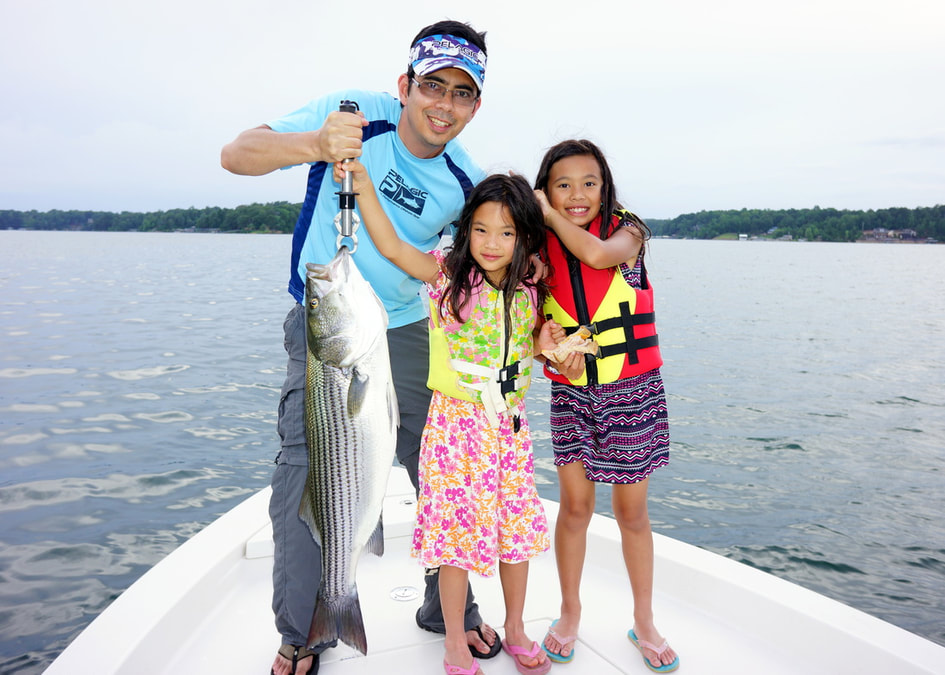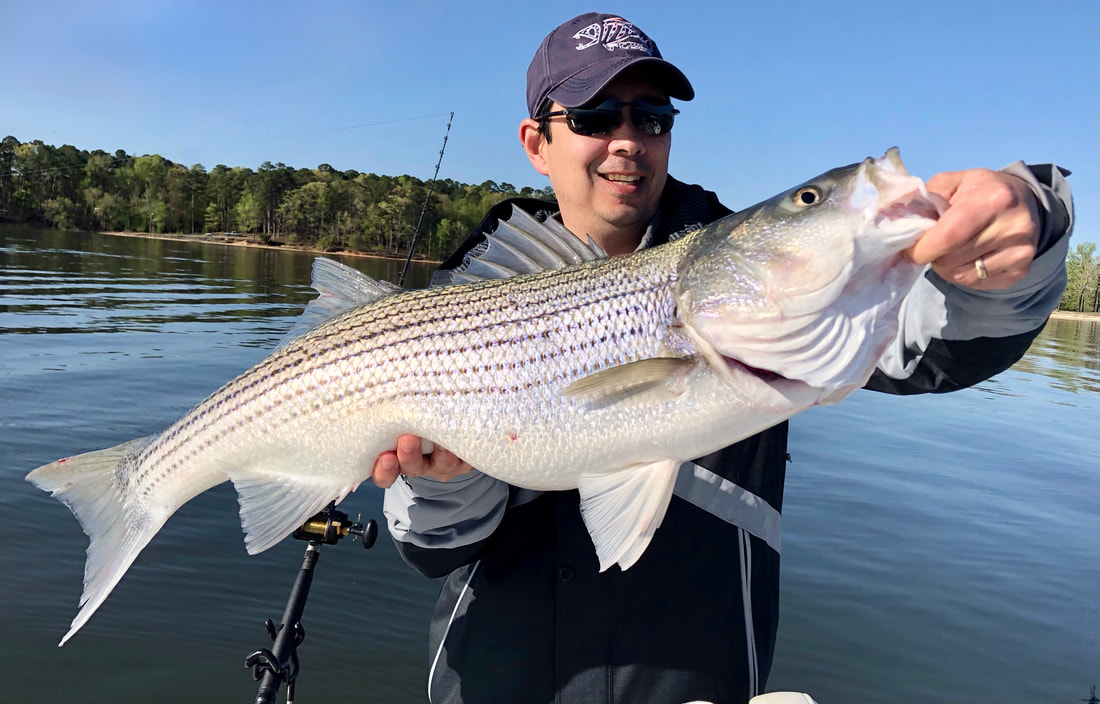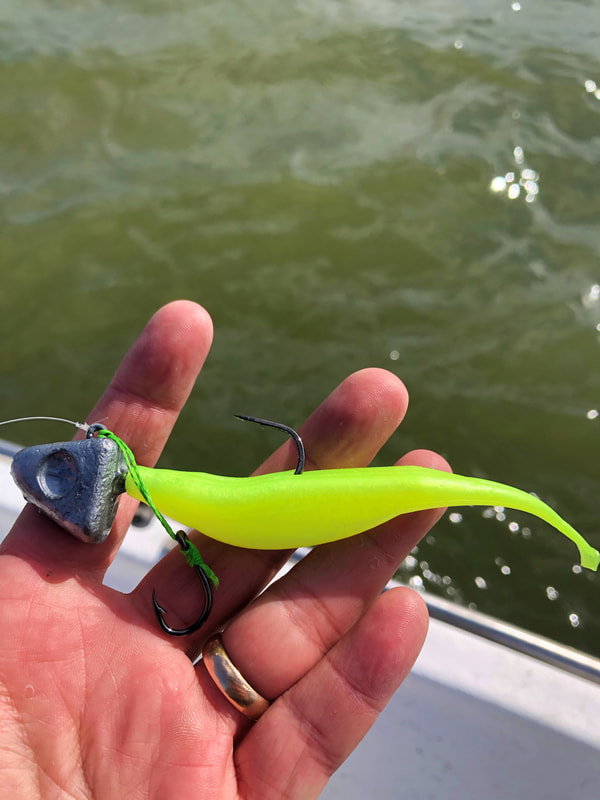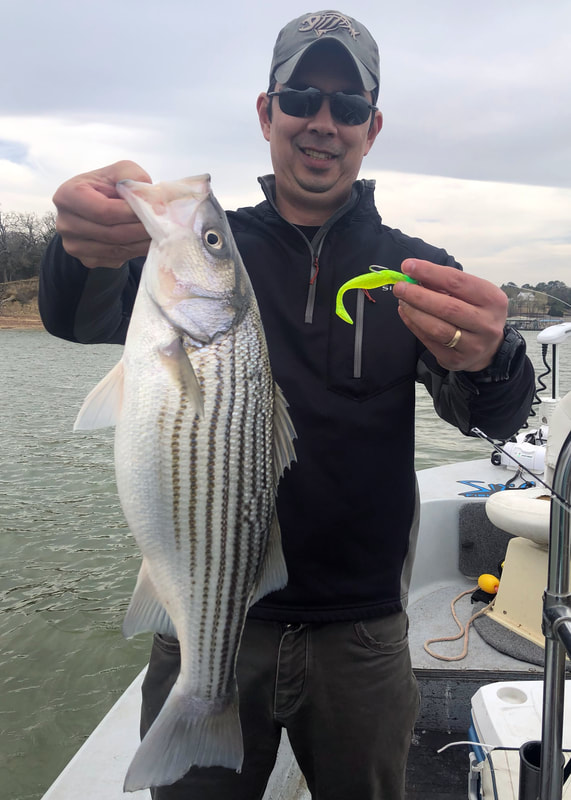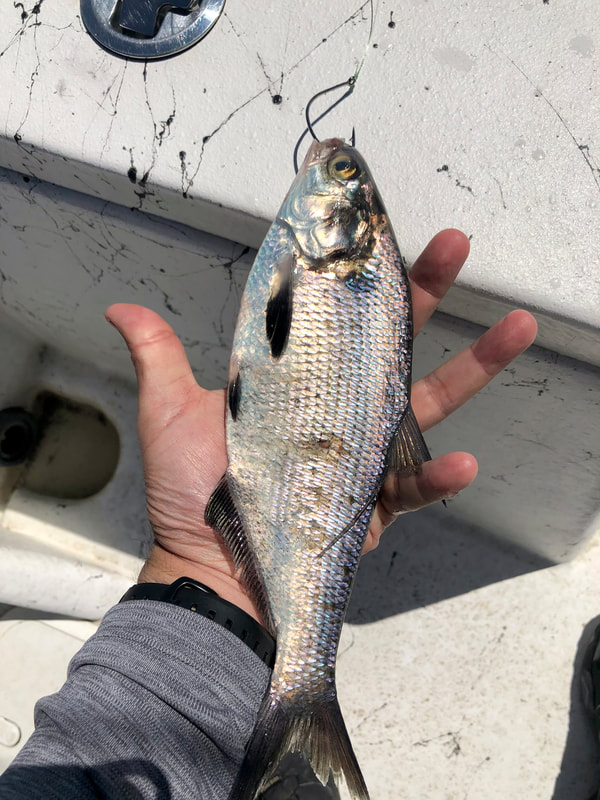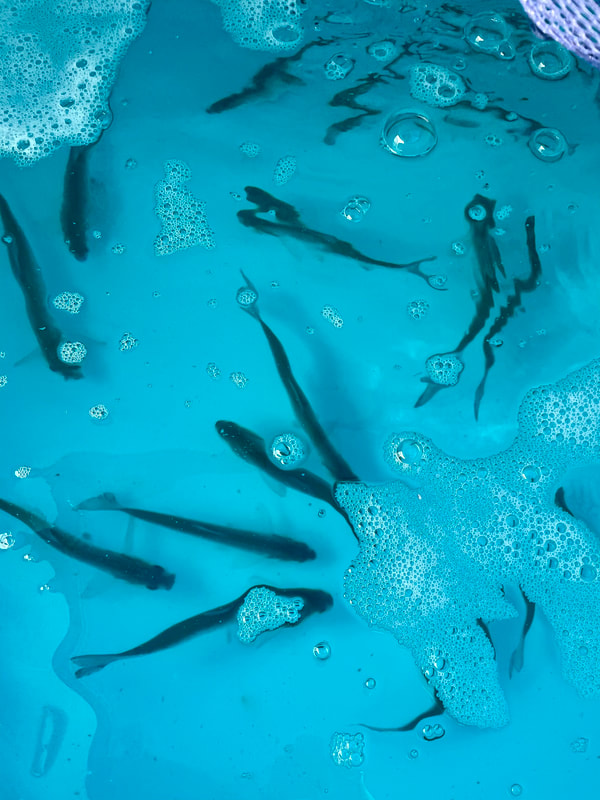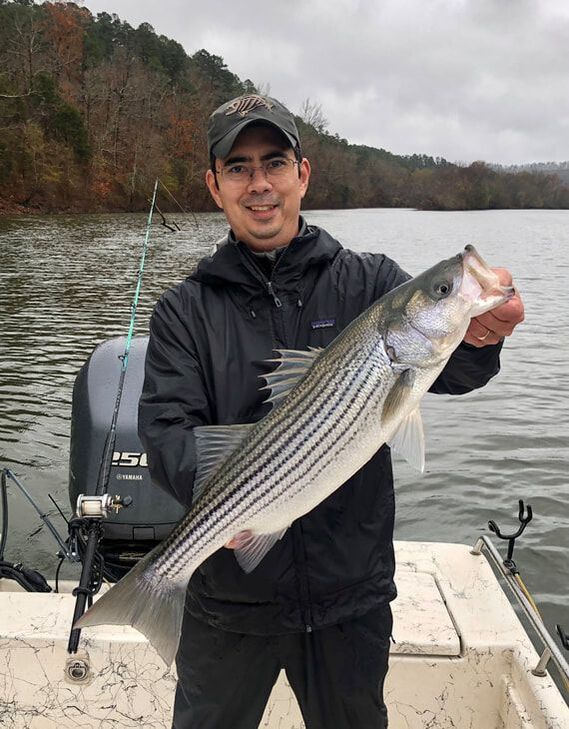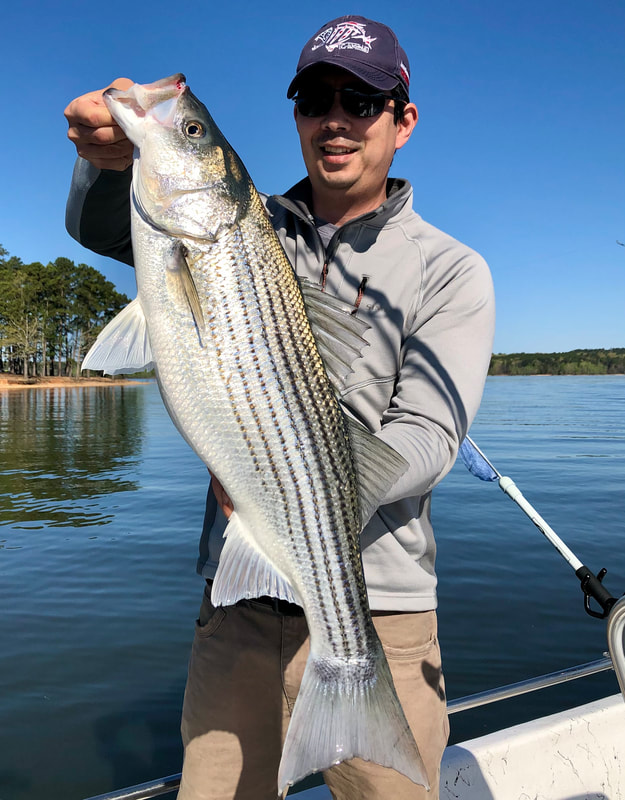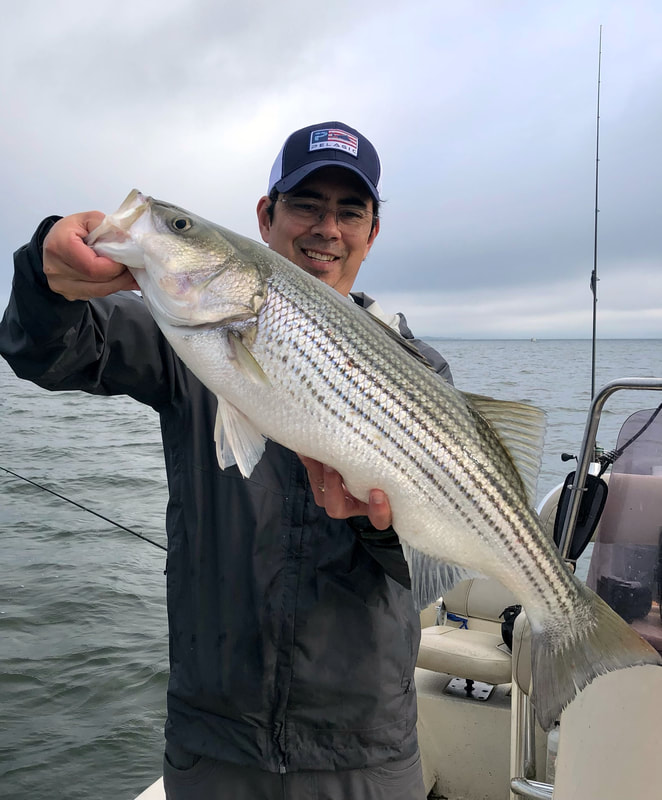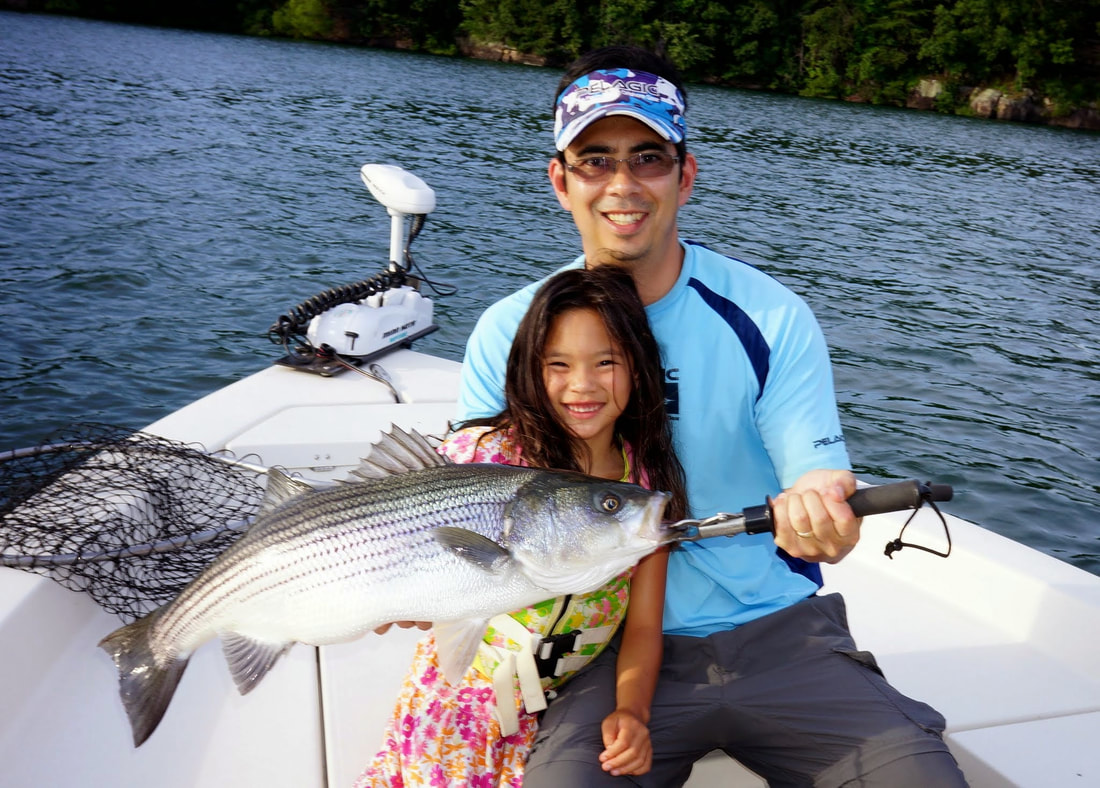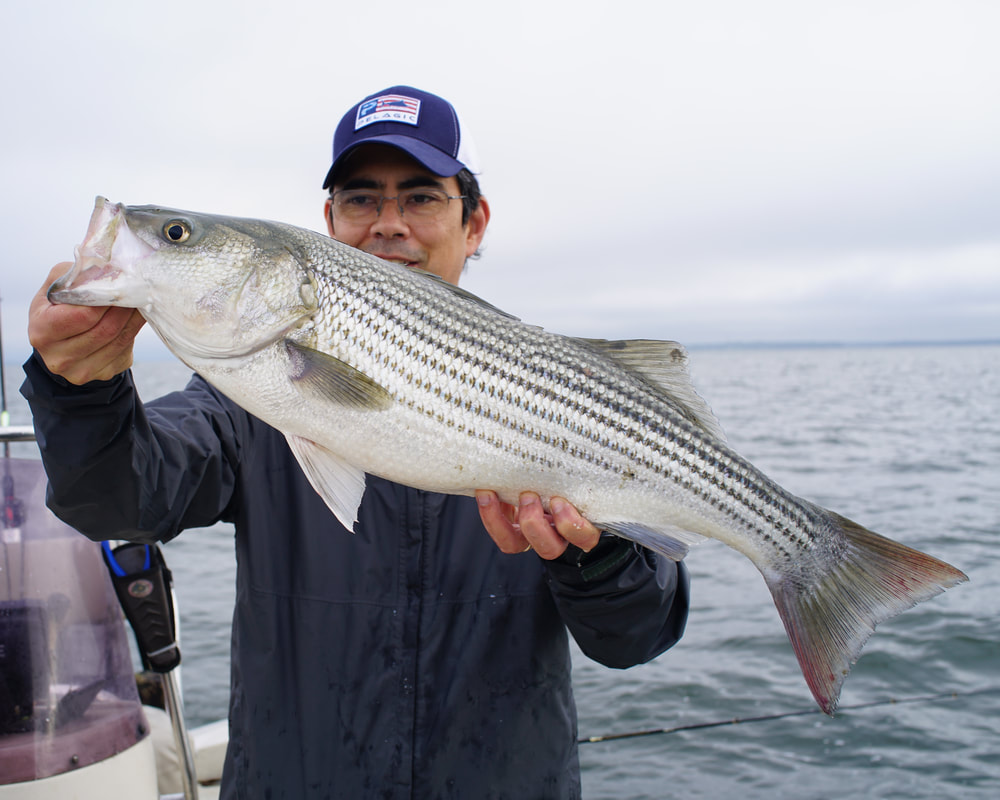Striped Bass
Morone Saxatilis
Home
Other Species
Striped Bass Description
The Striped Bass, also called Striper or Linesider, is a saltwater fish, but it has been successfully stocked in many lakes and rivers in the United States and is able to survive and thrive completely in fresh water. It is present in a number of bodies of water across the southern United States and in a few more northern states such as Pennsylvania. I have caught a few in salt water, and eventually will put up a page in the saltwater species section as the techniques are different from how you fish for them in freshwater and they are really like a different fish.
Stripers feed on a variety of things when small, but as adults they feed almost exclusively on smaller fish, often threadfin and gizzard shad. Most are either caught on live shad or on lures that imitate shad. They tend to follow their prey, and where you find shad you find Stripers. In bodies of water where Rainbow Trout are present, the Stripers love to eat those.
Stripers do not like very warm or very cold water and prefer to be in water that is 55-68 degrees. They may go into warmer water briefly to feed, but prefer to spend most of their time in cooler water with more oxygen.
Stripers have to be stocked in freshwater fisheries, and in most places they have to be restocked periodically because they do not spawn. However, there are a few places where they do reproduce in freshwater due to optimal salinity and other conditions, such as Lake Texoma in Texas. They spawn in the spring, and exhibit many of the same behaviors as their saltwater relatives although they do not spawn as successfully as they do in their natural salt water.
The freshwater Striped Bass record stands at 70lbs. Most freshwater stripers caught are under 10lbs, with many schooling fish in the 2-5lb range. Freshwater Striped Bass do not get as large as their saltwater relatives, which reach 120lbs. Stripers can reach about 30 years of age if everything lines up in their favor.
Striped Bass are decent to eat, but not a personal favorite of mine. They have some darker, fishier-tasting meat along their lateral lines that require some skill and attention to remove. Otherwise their meat is mostly firm and white.
Striped Bass Pound for Pound Fight Rating - 5 out of 10 on the Freshwater Scale
Striped Bass put up a decent fight for a freshwater fish. They make some runs and often have the size to pull you into cover although that is not usually their first instinct. They don't usually jump; it's more of a bulldogging fight with short runs.
Striped Bass Techniques
Stripers can sometimes be difficult to locate because they roam over large distances following bait around. Sometimes you need to troll to find fish. Stripers generally do not search for prey below them, so lures and baits should be fished above where Stripers are found on electronics. Stripers often come to the surface in feeding frenzies, and in those situations topwater lures work well. This predominantly happens early in the morning and sometimes at dusk, so keep your eyes peeled for boils and/or diving birds. In the summer they are caught deeper, and in the winter they are often caught near the surface.
Striped Bass Lures
The best lures to use depend on where the fish are in the water column. If they are feeding near the top, a topwater such as a Heddon Super Spook will work with a steady walk the dog retrieve. Sometimes they want a pencil popper type lure skittered across the top.
For subsurface fish, jerkbaits such and the Smithwick Rogue or swimbaits such as the Triple Trout (if they are eating larger gizzard shad or trout) are popular choices. Soft plastic swimbaits in shad-type colors are also popular. For deeper fish, spoons and bucktail jigs are popular. The common thread is that all lures should look like the baitfish they are eating in that area, whether it be threadfin shad, gizzard shad, rainbow trout, etc.
If you have to troll to find fish, umbrella rigs or crankbaits are popular choices.
In the winter, the fish slow down and you have to slow down as well. A technique called "deadsticking" is popular, where you use electronics to find the fish and then lower a heavy leadhead with a straight-tail plastic lure to the correct depth and drift along barely moving it.
See below for an example of a lure used for deadsticking. The lure sits horizontally and the straight tail plastic provides very subtle action.
If you have to troll to find fish, umbrella rigs or crankbaits are popular choices.
In the winter, the fish slow down and you have to slow down as well. A technique called "deadsticking" is popular, where you use electronics to find the fish and then lower a heavy leadhead with a straight-tail plastic lure to the correct depth and drift along barely moving it.
See below for an example of a lure used for deadsticking. The lure sits horizontally and the straight tail plastic provides very subtle action.
Below are some lure-caught Stripers:
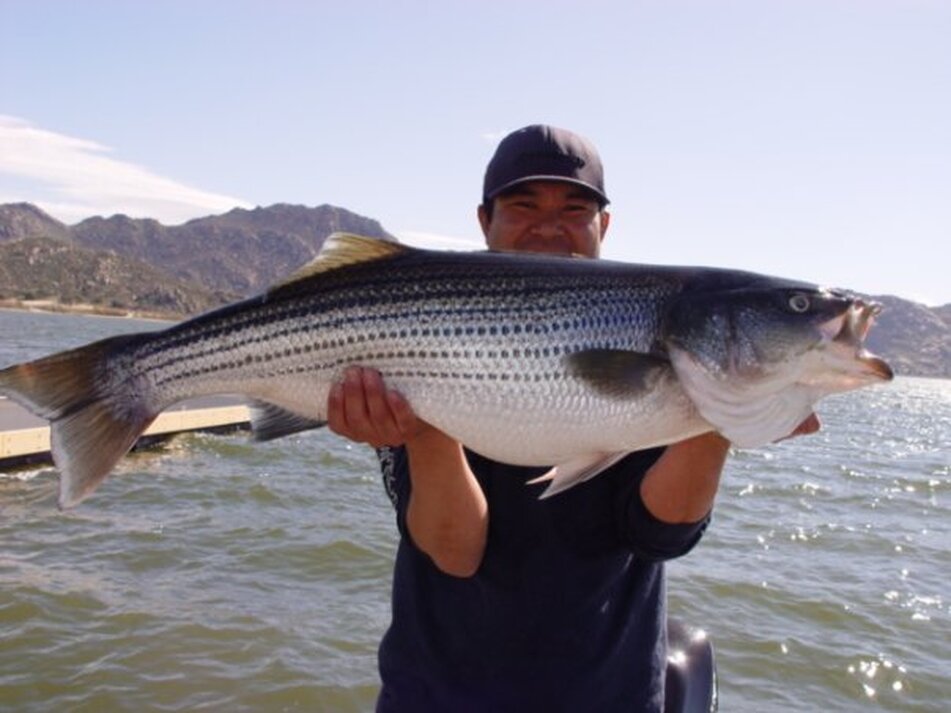 Big swimbait Striped Bass from California courtesy of Performance Tackle
Big swimbait Striped Bass from California courtesy of Performance Tackle
Striped Bass Baits
Live gizzard shad are very popular baits for Stripers. See photos below. Smaller Threadfin Shad work well for small Stripers but don't get the big ones.
Live gizzard shad are very popular baits for Stripers. See photos below. Smaller Threadfin Shad work well for small Stripers but don't get the big ones.
Some nice bait-caught Striped Bass:
Where to Find Big Striped Bass
There are many good Striper fisheries in the US. Some famous ones for big fish are Lake Ouchita and Beaver Lake in Arkansas, Lake Lanier in Georgia, Smith Lake in Alabama, Lake Cumberland in Kentucky, and Lake Mohave in Arizona. Lake Texoma in Texas is arguably the best fishery in terms of the combination of numbers and size.
This guy will help you catch big Stripers on Lake Ouchita and surrounding lakes:
http://new.davidcochranfishing.com/
These guys will help you catch them on Lake Texoma in Texas, one of the best Striper fisheries for numbers in the country:
www.striperexpress.com
There are many good Striper fisheries in the US. Some famous ones for big fish are Lake Ouchita and Beaver Lake in Arkansas, Lake Lanier in Georgia, Smith Lake in Alabama, Lake Cumberland in Kentucky, and Lake Mohave in Arizona. Lake Texoma in Texas is arguably the best fishery in terms of the combination of numbers and size.
This guy will help you catch big Stripers on Lake Ouchita and surrounding lakes:
http://new.davidcochranfishing.com/
These guys will help you catch them on Lake Texoma in Texas, one of the best Striper fisheries for numbers in the country:
www.striperexpress.com
